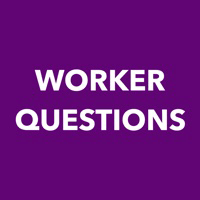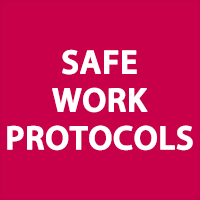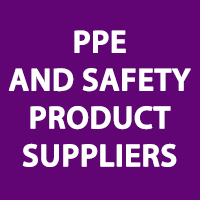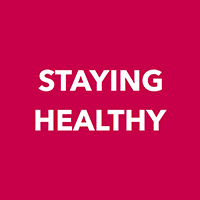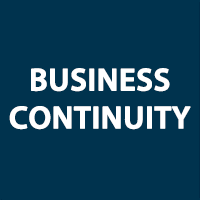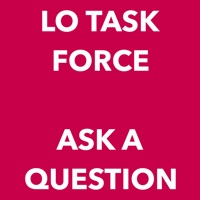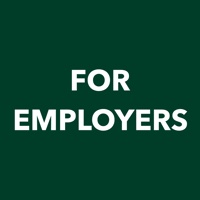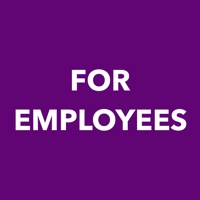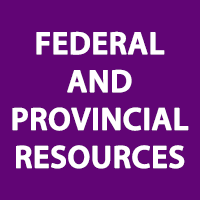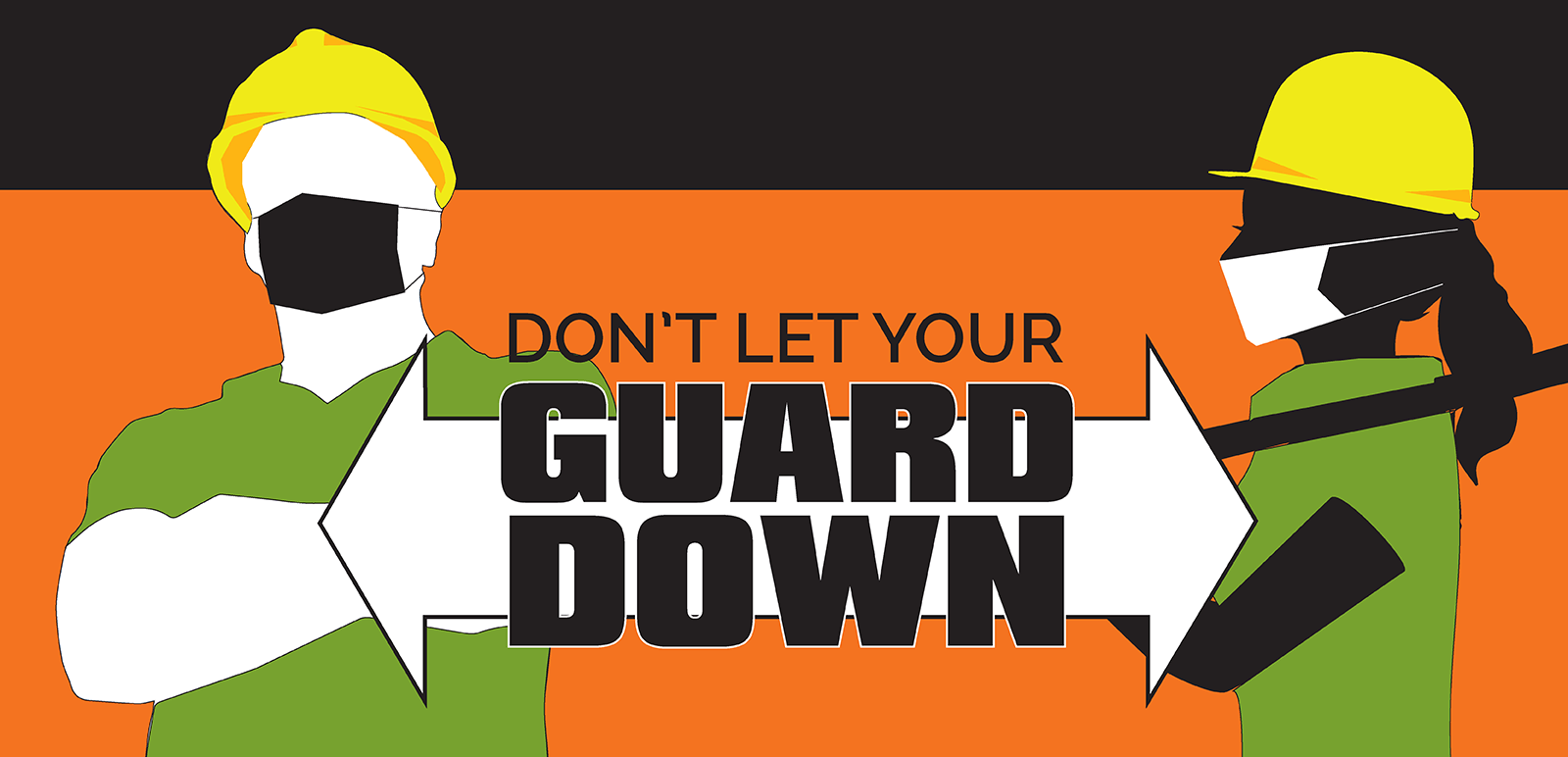
FAQs
Thank you to our members for the questions and resources to support or LO membership during the pandemic.
Employer questions
Canadian Federation of Independent Business (CFIB) Frequently Asked Questions
Workplace Safety Insurance Board (WSIB) Provides Premium Relief Package FAQs
Canadian Centre for Occupational Health and Safety (CCOHS) Employer questions about COVID-19 and maintaining a healthy and safe workplace
WSIB answers frequently asked questions about WSIB claims during COVID-19
Government of Canada updated FAQ on the Canada Emergency Wage Subsidy (CEWS) program plus a CEWS calculator
Question: The April 3 Updated Essential Workplaces List, Item 20, continues to be vague for some employers. Some employers continue to work in what they deem to be "Essential Work". Some businesses have received rulings not to work. Some have not. Let's say an employer has staff working, the work is found to be non-essential, that company is possibly fined for not complying with the Emergency Order, and a worker contracts Covid-19. Is that worker still covered by WSIB? Is that employee able to sue the employer?
WSIB responds: “The Operational Policy Branch provides policy information but cannot comment on specific cases or provide legal advice.According to section 13 of the Workplace Safety and Insurance Act, 1997 (WSIA), a “worker who sustains a personal injury by accident arising out of and in the course of his or her employment is entitled to benefits under the insurance plan”. Furthermore, pursuant to s.26(2) a worker’s entitlement to benefits under the insurance plan is in lieu of all rights of action that a worker, or their representative, has against an employer.
With respect to determining if an injury occurred in the course of employment, additional guidance is provided in OPM document 15-02-02 Accident in the Course of Employment. In particular, to determine if a personal injury by accident occurred in the course of employment, the decision-maker applies the criteria of place, time, and activity. While the importance of the three criteria depends on the circumstances of each case, usually it’s the activity of the worker at the time of the accident that is most significant in determining work relatedness.
In the present case, seeing that the workers were seemingly performing their routine work activities, a worker who experiences a workplace accident is likely entitled to receive benefits under the WSIA. The fact that the employer continued to operate their business in contravention of the Emergency Order made under the Emergency Management and Civil Protection Act would likely not affect their workers’ entitlement to benefits under the WSIA. However, in lieu of entitlement, the injured worker is likely not able to seek a right of action against the employer, as per s.26(2) of the WSIA.
With respect to entitlement for a worker who contracts COVID-19, there are specific criteria that must be satisfied. Specifically, evidence must show that the person’s risk of contracting the disease through their employment is greater than the risk to which the public at large is exposed and that work significantly contributed to the person’s illness. To determine the work-relatedness of COVID-19 claims, the Workplace Safety and Insurance Board (WSIB) will look at details such as the person’s employment activities, their symptoms and whether they have a diagnosis of COVID-19. For more information please see the WSIB’s COVID-19 update page.”
Question: If my business takes advantage of the interaction with 10 per cent Wage Subsidy, will it impact access to the Canada Emergency Wage Subsidy?
Answer:For employers that are eligible for both the Canada Emergency Wage Subsidy and the 10 per cent wage subsidy for a period, any benefit from the 10 per cent wage subsidy for remuneration paid in a specific period would generally reduce the amount available to be claimed under the Canada Emergency Wage Subsidy in that same period.
Law firm BLG provides more information on both subsidies here.
Question: Can I use the Canadian Emergency Response Benefit if my employee(s) have accessed the Canadian Emergency Response Benefit?
Answer:An employer would not be eligible to claim the Canada Emergency Wage Subsidy for remuneration paid to an employee in a week that falls within a 4-week period for which the employee is eligible for the Canadian Emergency Response Benefit.
Question: How do I know if I am eligible and if so how to apply for the Canadian Emergency Relief Benefit (CERB)?
Answer:Information on the process to apply, when to apply (depends on your birth month, starting April 6, 2020) and FAQ’s is available online at www.canada.ca/en/services/benefits/ei/cerb-application.html
Question updated April 3, 2020: How do I know if my business is considered to be an Essential Workplace?
Answer:Review the list provided by the Ontario Government.
Please note: You do not need to stop operating if your employees can work remotely from home. Only non-essential physical workplaces need to close until at least April 18, 2020. This is in response to our temporary measures to stop the spread of the 2019 novel coronavirus (COVID-19).
Question:
As an employer, can I top up my employees who are receiving the Canadian Emergency Relief Benefit (CERB ) using the Supplementary Unemployment Benefit (SUB) plan mechanism?
Answer:We are told by the government that employers will not be able to top up employees who are receiving CERB (The SUB plan apples to EI recipients only).
Question: Where do I find more information on the deferral of GST/HST?
Answer:
More information is available here: FAQs for deferral of GST/HST Tax Remittances
Question: Where can I find more information about the new Temporary Wage Subsidy for Employers?
Answer:https://www.canada.ca/en/revenue-agency/campaigns/covid-19-update/frequently-asked-questions-wage-subsidy-small-businesses.html
- What is the Temporary Wage Subsidy for Employers?
- Which employers are eligible?
- How much is the subsidy?
- How do I calculate the subsidy?
- How will I receive the subsidy?
- When can I start reducing remittances?
- Where subsidies exceed payroll remittances
- What if I don’t reduce payroll remittances during the year?
- What books and records do I need to support the subsidy?
- Is the subsidy considered taxable income?
- What if my business is closed?
- What about payroll remittances made to Revenu Québec
- What if I pay tax-exempt remuneration?
Question: How do I know if my business is considered to be an Essential Workplace?
Answer:
Review the list provided by the Ontario Government.
Please note: You do not need to stop operating if your employees can work remotely from home. Only non-essential physical workplaces need to close until at least April 7, 2020. This is in response to our temporary measures to stop the spread of the 2019 novel coronavirus (COVID-19).
Question: If you have reviewed the list of essential workplaces and did not see your line of business represented, what should I do?
Answer:
- Call the toll free number at: Stop the Spread Business Information Line now open at 1-888-444-3659
- After you apply the government will review your application and contact you within two business days to let you know if the list of essential workplaces has been updated based on your submission. Submitting an application does not grant immediate permission to open your physical location.
Question:
How do I operate my business and still protect everyone?
Answer:It is suggested that you implement the same measures as outlined by the provincial and government related to social distancing, providing all necessary Personal Protective Equipment (PPE) and implementing measures to support recommended hygiene while at work, along with other measures to maintain worker Health & Safety (including wipe down of surfaces and social distancing, etc.) at all times while at work.
Resources:
Risk-informed decision-making for workplaces/businesses during the COVID-19 pandemic
A framework for risk-informed decision making about public health actions for workplaces/businesses during the COVID-19 pandemic
Government of Canada
Resources for Canadian Businesses
BDC
COVID-19 health and safety updates
Question:
Where do I find information about what measures my staff need on the job site?
Answer: Refer to; Keep informed with the latest COVID-19 health and safety updates and click on “Prevention and Risk” for the most up to date information.
Question: How can I take care of my staff?
Answer:Take every precaution in terms of providing health and safety for all. Provide constant communications and updated information to all staff and clients. Seek out and share information from LO’s COVID-19 Resource Hub
Resources:
Risk-informed decision-making for workplaces/businesses during the COVID-19 pandemic
A framework for risk-informed decision making about public health actions for workplaces/businesses during the COVID-19 pandemic
Government of Canada
Resources for Canadian Businesses
To support communications with staff, take advantage of posters and infographic resources provided by the Federal and Provincial governments and presented on the LO COVID-19 Resource Hub.
Document all training undertaken as you normally would and keep records of employee attendance.
Question: How can I help my employees if they are laid-off?
Answer:There are temporary Employment Insurance (EI) measures made available by the government. Employees should be provided this information and encouraged to apply on-line as soon as possible upon notice of lay off.
Employment Insurance (EI)
Question: Are there supports for employees who need to stay on EI due COVID-19 and their benefits are expected to end soon?
Answer:Canadians who are already receiving EI regular and sickness benefits as of today would continue to receive their benefits and should not apply to the CERB. If their EI benefits end before October 3, 2020, they could apply for the CERB once their EI benefits cease, if they are unable to return to work due to COVID-19. Canadians who have already applied for EI and whose application has not yet been processed would not need to reapply. Canadians who are eligible for EI regular and sickness benefits would still be able to access their normal EI benefits, if still unemployed, after the 16-week period covered by the CERB.
MORE INFORMATION ON THE PROPOSED LEGISLATION
Question: What should I do if I suspect that I or one of my co-workers/ family members is ill?
Answer:- Take the Ontario Self Assessment
- Refer to the Symptoms and Treatment Page
- Follow Directions from Ministry of Health
Question: How do I fill out a Record of Employment (ROE) for lay offs due to the COVID-19?
Answer:There are 2 resources provided:
- Federal Government: Guidance for Employment Insurance- Record of Employment
- Canadian Payroll Association: FAQ on Payroll and COVID-19
Question: What should I do if a case does arise at our workplace?
Answer:Follow the same protocols your company has in place when dealing with the Occupational Health and Safety Act and reportable incident with Workers Compensation (WSIB).
For more information about WSIB insurance, claims management, and the COVID-19 virus, CLICK HERE
Question: Business/Corporations: What do I need to know about corporate tax returns and filing?
Answer:There has been no change to the filing due dates for T2 corporate returns. CRA is allowing business to defer payment of income tax amounts that are owing on or after March 18, 2020 and before September 2020 until August 31, 2020. It is our understanding that any balances deferred (as described above) would not have any additional interest accrued until after August 31, 2020.
Question: Have there been any change to GST/HST or payroll remittances?
Answer:There is no change for GST/HST, payroll remittances or any other withholdings.
Question: The government announced a 10% payroll subsidy for businesses. How do I access that?
Answer:The 10% payroll subsidy is in effect immediately. Any eligible small employers may reduce their payroll remittances to the CRA equal to 10% of the gross wages paid to an employee up to a maximum of $1,375 per employee and $25,000 per employer. The subsidy applies to remuneration paid to employees on or after March 18 and before June 20.
You are an eligible employer if you:
- are a non-profit organization, registered charity, or a Canadian-controlled private corporation (CCPC);
- have an existing business number and payroll program account with the CRA on March 18, 2020; and
- pay salary, wages, bonuses, or other remuneration to an employee.
CCPCs are only eligible for the subsidy if their associated group taxable capital in Canada for the preceding tax year is less than $15 million.)
Example: For example, if you had 3 employees that earned a total of $1,500 of gross wages in a remittance period. The total remittance owing is $500, you would pay CRA $350 ($500 – ($1,500 x 10%).
Further details can be found here: https://www.canada.ca/en/revenue-agency/campaigns/covid-19-update/frequently-asked-questions-wage-subsidy-small-businesses.html
Question: Some of our employees have already run out of EI, or will run out of EI soon. What programs should our people be accessing?
Answer:To support people facing unemployment, the Federal Government has established the new Canada Emergency Response Benefit (CERB) provides a taxable benefit of $2,000 a month for up to 4 months to:
- workers who must stop working due to COVID-19 and do not have access to paid leave or other income support.
- workers who are sick, quarantined, or taking care of someone who is sick with COVID-19.
- working parents who must stay home without pay to care for children that are sick or need additional care because of school and daycare closures.
- workers who still have their employment but are not being paid because there is currently not sufficient work and their employer has asked them not to come to work.
- wage earners and self-employed individuals, including contract workers, who would not otherwise be eligible for Employment Insurance.
Link: https://www.canada.ca/en/department-finance/economic-response-plan/covid19-individuals.html#new_canada_emergency_response_benefit
Question: I am trying to implement an employee contract where can I find a template for me to adapt and use?
Answer:LO HR Toolkit Current, up-to-date Toolkits provide a Human Resources Policies and Procedures Manual and a Human Resources Employee Handbook developed for Landscape Ontario members to use in their business.
Question: Where do I find a Pandemic Policy and Checklist to adapt and implement in my business?
Answer:WSPS provides these Free Tools to Help Implement Pandemic Policies
Question: We are an independent garden centre and landscaping company, wondering if you have any clearer clarifications on whether we are an Essential Workplace?
Answer:There have been many interpretations, and as each business model can be unique, we have sought guidance from the government.
LO continues to await official response from the government as to where each sector fits. In the meantime, we are suggesting that you call in to the toll free number at: Stop the Spread Business Information Line Now Open at 1-888-444-3659
Question: Is there an effective disinfectant for workplaces and work surfaces?
Answer:
Cleaning Products: Although there is lack of specific evidence for their effectiveness against COVID-19, cleaning with water and household detergents and use of common disinfectant products should be sufficient for cleaning and disinfection in non-healthcare settings.Footnote 8 If household or commercial disinfectant cleaning products are not readily available, hard surfaces can be disinfected using a mixture of 1 part bleach (5% sodium hypochlorite) and 9 parts water, ensuring the dilute solution makes contact with the surface for 1 minute for disinfection. Footnote 9
Clean and disinfect frequently touched objects and surfaces using antibacterial wipes or sprays (e.g. doorknobs, telephones, keyboards, light switches and desktops). It is still not known how long the COVID-19 virus survives on surfaces, although preliminary information suggests the virus may survive a few hours or more. Simple disinfectants, such as household antibacterial cleaning products (e.g. Lysol), are effective on non-porous surfaces when used as per the product directions. You can also use diluted bleach (1 part bleach to 9 parts water) to clean high-touch surfaces.
If they can withstand the use of liquids for disinfection, high-touch electronic devices (e.g., keyboards, tablets, smartboards) may be disinfected with 70% alcohol (e.g. alcohol prep wipes) ensuring the dilute solution makes contact with the surface for 1 minute for disinfection.Footnote 5
Even though the new coronavirus can stay on surfaces for a few hours or up to several days (depending on the type of surface), it is very unlikely that the virus will persist on a surface after being moved, travelled, and exposed to different conditions and temperatures. If you think a surface may be contaminated, use a disinfectant to clean it. After touching it, clean your hands with an alcohol-based hand rub or wash them with soap and water
Be aware that both alcohol and chlorine can be useful to disinfect surfaces, but they need to be used under appropriate recommendations. Follow product labels/directions for any recommendations on PPE and safe handling.
Thank you to Workplace Safety Prevention Services (WSPS) for providing this information
Employee questions
FAQs about Covid-19 WSIB claims
Question: How can we best avoid catching or spreading the COVID-19 virus in our workplace?
Answer:
- If you are sick, stay home. Ministry of Health: How To Protect Yourself
- General Guidance to reduce exposure to the virus and protect your health includes:
- Wash your hands often with soap and water for at least 20 seconds, especially after touching any frequently used item or surfaces, after going to the bathroom; before eating; and after blowing your nose, coughing or sneezing. If soap and water aren't available, use an alcohol-based sanitizer that is at least 60% alcohol.
- Cover your cough or sneeze with a tissue, then throw the tissue in the trash.
- If there is no tissue available, cough or sneeze into your elbow.
- Sneeze and cough into your sleeve.
- Avoid touching your eyes, nose or mouth.
- Avoid contact with people who are sick.
- Stay home if you are sick.
- Social Distancing: Maintain 6’ of personal space and particularly avoid close contact with people who are sick.
- Self-isolation/Stay at home.
- Limit the number of visitors to your home.
- Clean and disinfect frequently touched objects and surfaces using a regular household cleaning spray, disinfectant or wipe.
- General Guidance to reduce exposure to the virus and protect your health includes:
- Poster: What you need to know to help you and your family stay healthy
Question: I am sick and I’m not sure if I should come to work. What should I do?
Answer:- If you are sick stay home. Take the Self Assessment located here: https://covid-19.ontario.ca/self-assessment/#q0
- Refer to the Symptoms and Treatment Page: https://www.ontario.ca/page/2019-novel-coronavirus#section-8
- Contact your primary care provider or Telehealth Ontario at 1-866-797-0000 if you’re experiencing symptoms of the 2019 nova coronavirus.
- Please do not visit an assessment centre unless you have been referred by a health care professional.
- Do not call 911 unless it is an emergency.
- Notify your employer that you are sick and follow the workplace rules on requesting leaves for illnesses.
- Refer to: The Ontario Legislature has passed the Employment Standards Amendment Act (Infectious Disease Emergencies), 2020 to provide job-protected leave to employees in isolation or quarantine due to COVID-19, or those who need to be away from work to care for children because of school or day care closures or to care for other relatives.
- The Federal government has released financial supports for individuals impacted by COVID-19.
Question: My child or family member is sick. What should I do?
Answer:- Err on the side of caution and stay home until you better understand their illness.
- Contact your primary care provider or Telehealth Ontario at 1-866-797-0000 to determine whether your family member may have COVID-19 and closely follow their instructions.
- Notify your employer that you are caring for a sick family member.
- Discuss alternate /temporary work and/or income support options with your employer.
- Refer to: The Ontario Legislature has passed the Employment Standards Amendment Act (Infectious Disease Emergencies), 2020 to provide job-protected leave to employees in isolation or quarantine due to COVID-19, or those who need to be away from work to care for children because of school or day care closures or to care for other relatives.
- The Federal government has released financial supports for individuals impacted by COVID-19.
Question: I think I’ve been exposed to COVID-19. What do I do?
Answer:- Stay at home - Do not go to work.
- Contact your primary care provider or Telehealth Ontario at 1-866-797-0000 to determine your risk level and closely follow their instructions.
- Notify your employer if you believe you have been exposed to COVID-19.
- Depending on your circumstances, you may be asked to quarantine as per guidance identified by the government (incubation period for the virus).
- Work with your employer to determine if temporary work from home arrangements can be made.
- If no temporary work from home arrangements are available, the worker will be advised to apply for:
- Employment Insurance: https://www.canada.ca/en/employment-social-development/corporate/notices/coronavirus.html
- Emergency Care and Support Benefits: https://www.canada.ca/en/employment-social-development/corporate/notices/coronavirus.html
Question: I am not sick, and my family members are not sick, but a member of my family has a chronic condition or has been deemed at heightened risk by a healthcare professional. I’ve been advised by a doctor or health official to stay home. What do I do?
Answer:- Follow the guidance of your healthcare professional and stay home.
- Work with your employer to determine if temporary work from home arrangements can be made.
- If no temporary work from home arrangements are available, the worker will be directed to apply for: Employment Insurance of Emergency Care and Emergency Support.
Question: I have a confirmed case of Coronavirus. What do I do?
Answer:- Stay home. Do not go to work.
- Follow your primary care provider’s instructions for your own medical care and for those of your family/household members.
- Notify your employer immediately that you have been diagnosed with COVID-19 and follow the workplace procedures for requesting a leave for illnesses.
- Refer to the Symptoms and Treatment Page.
- The Ontario Legislature has passed the Employment Standards Amendment Act (Infectious Disease Emergencies), 2020 to provide job-protected leave to employees in isolation or quarantine due to COVID-19, or those who need to be away from work to care for children because of school or day care closures or to care for other relatives.
- The Federal government has released financial supports for individuals impacted by COVID-19.
Question: I am an employee and a fellow employee has been notified they are with a confirmed case of Coronavirus. What do I do?
Answer:- Contact your employer immediately so that risk can be assessed and appropriate steps can be taken to minimize/eliminate additional exposures.
Question: I have already run out of EI, or will run out of soon. What programs should I be accessing?
Answer:To support people facing unemployment, the Federal Government has established the new Canada Emergency Response Benefit (CERB<) provides a taxable benefit of $2,000 a month for up to 4 months to:
- workers who must stop working due to COVID19 and do not have access to paid leave or other income support.
- workers who are sick, quarantined, or taking care of someone who is sick with COVID-19.
- working parents who must stay home without pay to care for children that are sick or need additional care because of school and daycare closures.
- workers who still have their employment but are not being paid because there is currently not sufficient work and their employer has asked them not to come to work.
- wage earners and self-employed individuals, including contract workers, who would not otherwise be eligible for Employment Insurance.
Link: https://www.canada.ca/en/department-finance/economic-response-plan/covid19-individuals.html#new_canada_emergency_response_benefit
Staying Healthy at Work
Question: I have a worker that I pick up everyday to work, with the social distancing and with the recommendations that we limit that kind of proximity, can I tell him that I cannot pick him up for the time being?
Answer:It is our duty to maintain the 2m social distancing so unless you can support that then my suggestion is you need to provide other means of transportation and if no possible lay him off. There are EI supports for workers currently. See the COVID-19 Resource Hub.
Some firms are having staff drive separate vehicles/personal vehicles to stay safe between clients etc. and the business is paying time and mileage... There are strategies possible if you want to continue to serve clients.
Question 2:
Are we allowed to have 1 extra worker in our trucks?
Answer:Social distancing rules prevail, so to answer your question, as long as that distance is maintained within the truck/vehicle then the answer is yes. (Depends on the size of the vehicle).
Question 3:
Can we still meet customers (obviously practicing social distancing?)
Answer: Yes, many of our members are meeting clients with social distancing measures in play that include:
- 2 metre distance
- Video and telephone conference meetings
- Exchanging communications via e-mail, etc.
General Questions
Question 1:
I just returned from a personal trip from outside of Canada. Can I come to work?
Answer:
- Federal and provincial public health leaders have recommended that all travellers from outside of Canada self-isolate for 14 days. These efforts will contribute to slow the introduction and spread of COVID-19 in Canada.
- The following travel guidance is provided by the Federal Government.
Question: My child’s school system is closed, and I don’t have childcare. What do I do?
Answer:- Employees should notify their employer as soon as possible.
- The government of Canada has made provisions for parents with children who require care or supervision due to school closures, and are unable to earn employment income.
Announcement from March 25. - This benefit will be open for application in April 2020. More information.
Question: I am working from home. Please provide tips on how to effectively work from home.
Answer:- Unsurprisingly, there are more people working from home than ever before. If you're new to working remotely, these tips can certainly help you stay productive and maintain balance.
- Set Up a Schedule & Maintain Regular Hours:
- Setting a schedule and sticking to it will help your production and maintain a healthy work-life balance. We all love the flexibility of working from home but try to keep a schedule that separates work and life.
- Create a Morning Routine:
- A routine can be very powerful in starting the day off right. Rolling out of bed and going straight to your workstation will only cause you to disrupt your workflow more than usual. Get cleaned up, dressed and start the coffee machine before you even look at your desk.
- Include Scheduled Breaks Into your Day:
- Getting up and for a walk is an excellent way to keep your energy levels high for the latter part of the day. Staring at a screen for 8 hours straight will kill your production. Also, don't forget to eat!
- Keep a Dedicated Office Space:
- In a perfect world, remote employees would have a dedicated office but for some that's not always the case. Try your best to set up your workstation in a light traffic zone. Distractions at home come easy so try to get ahead of them.
- Check in Constantly: This might be the most important tip we have. Over-Communication: update your team frequently and keep everyone on the same page. When everyone’s working remotely, it’s very easy to end up trapped in your own world. Use tech like video communication tools to keep out of isolation.
- In addition to the above general guidance provide you with the following resources that will help both you and your teams navigate working remote – topics include: Working Remotely, Leading at a Distance: https://learning.linkedin.com/blog/productivity-tips/new-to-working-remotely--these-resources-can-help
Dr Alan Weiss by way of Jeffery Scott
- Work hard, play hard, but do them separately!
- Set up a work schedule, allowing for breaks and lunch. Ask your family to follow the schedule, as if you’re “going to the office.”
- Dress decently. You’ll feel better about yourself. Clean up, as if you were meeting people personally.
- Close the door if you have one. Arrange a “do not disturb” with your kids.
- Don’t turn on TV for any updates. Don’t surf the web. Don’t respond to personal email during work time.
- Make a list of priorities each morning (or end of day) to accomplish.
- “Chunk” thinks down, and time block them on your schedule. Try to do sprints (working fast through one thing), and don’t work on any one thing for more than about 45 minutes.
- Remove distractions from your room: musical instruments, crossword puzzles, and so forth.
- No music (with words) playing in the background. It’s a distraction for most people.
- Don’t multi-task or you’ll do three things poorly at once.
- Don’t plan a full day. Leave time for things that pop up, with time to do it.
- Go outside during your lunch break. Don’t eat at your desk. Get some fresh air.
- Explain to callers you’re working at home if need be, if they can hear dogs and kids in the background.
- Invest in good cameras and microphones for zoom meetings.
- End the day with a clean desk. Don’t allow clutter or disorganization. When you “show up” for work, your physical desk should be clean, and your virtual desktop should also be clean.
- Use healthy snacks and drinks during the day, no sugar junk foods that make you go up and down. Avoid over consumption of coffee and caffeine drinks; you may get jittery and restless.
- Set expectations for your family so that they can be supportive.
- If you’re alone, be prepared to not respond to UPS, FedEx, and other deliveries. Try to create “no signature required".
- Postpone personal time / socializing until the end of the day. Don’t try to mix fun and work, do it in breaks if need be.
Question: Is there an effective disinfectant for workplaces and work surfaces?
Answer:
Cleaning Products: Although there is lack of specific evidence for their effectiveness against COVID-19, cleaning with water and household detergents and use of common disinfectant products should be sufficient for cleaning and disinfection in non-healthcare settings.Footnote 8 If household or commercial disinfectant cleaning products are not readily available, hard surfaces can be disinfected using a mixture of 1 part bleach (5% sodium hypochlorite) and 9 parts water, ensuring the dilute solution makes contact with the surface for 1 minute for disinfection. Footnote 9
Clean and disinfect frequently touched objects and surfaces using antibacterial wipes or sprays (e.g. doorknobs, telephones, keyboards, light switches and desktops). It is still not known how long the COVID-19 virus survives on surfaces, although preliminary information suggests the virus may survive a few hours or more. Simple disinfectants, such as household antibacterial cleaning products (e.g. Lysol), are effective on non-porous surfaces when used as per the product directions. You can also use diluted bleach (1 part bleach to 9 parts water) to clean high-touch surfaces.
If they can withstand the use of liquids for disinfection, high-touch electronic devices (e.g., keyboards, tablets, smartboard) may be disinfected with 70% alcohol (e.g. alcohol prep wipes) ensuring the dilute solution makes contact with the surface for 1 minute for disinfection.Footnote 5
Even though the new coronavirus can stay on surfaces for a few hours or up to several days (depending on the type of surface), it is very unlikely that the virus will persist on a surface after being moved, travelled, and exposed to different conditions and temperatures. If you think a surface may be contaminated, use a disinfectant to clean it. After touching it, clean your hands with an alcohol-based hand rub or wash them with soap and water.
Be aware that both alcohol and chlorine can be useful to disinfect surfaces, but they need to be used under appropriate recommendations. Follow product labels/directions for any recommendations on PPE and safe handling.
Thank you to Workplace Safety Prevention Services (WSPS) for providing this information
Partner FAQ Resources
Sherrard Kuzz provides COVID-19 Frequently Asked Questions to Assist Employers
As the 2019 novel coronavirus (COVID-19) continues to spread around the globe, employers need to know their legal rights and obligations as it relates to the Canadian workplace.
Here are some of the most pressing Frequently Asked Questions.
Deloitte: COVID-19 Managing cash flow during a period of crisis
COVID-19 Employee Rights (Ontario) provided by Dutton Employment Law (March 20, 2020)
HR Downloads Q&A about Employment and ROEs (March 20, 2020)
SB Partners offers Financial Guidance for Business and Canadians during COVID-19
Canadian Federation of Independent Business (CFIB)
Greenius: COVID-19 Tips for Best Practices
